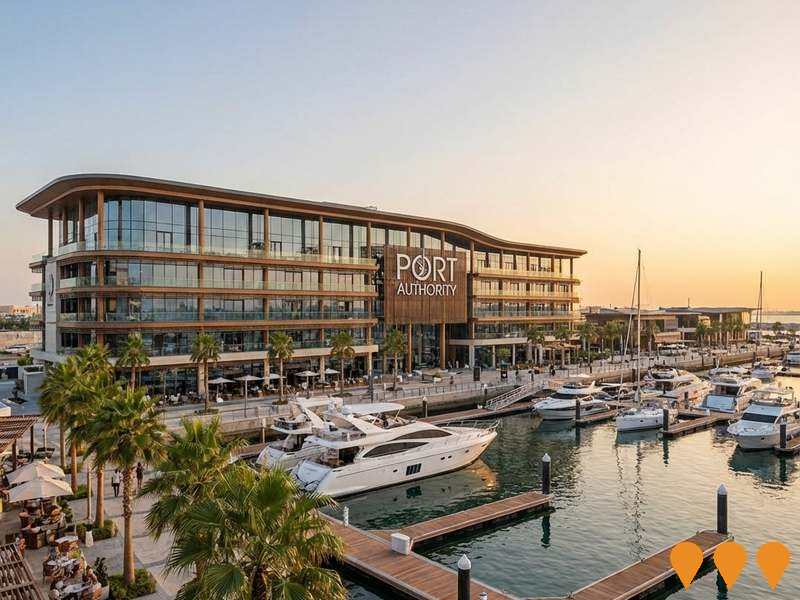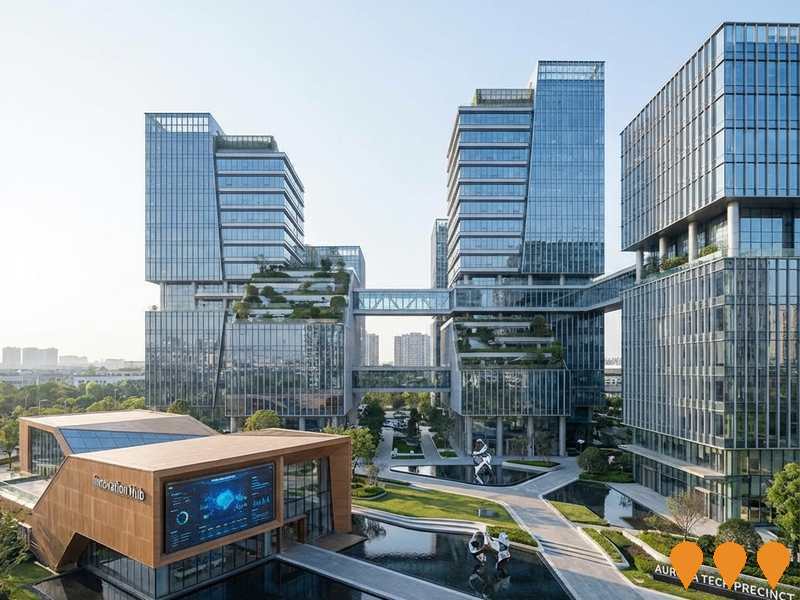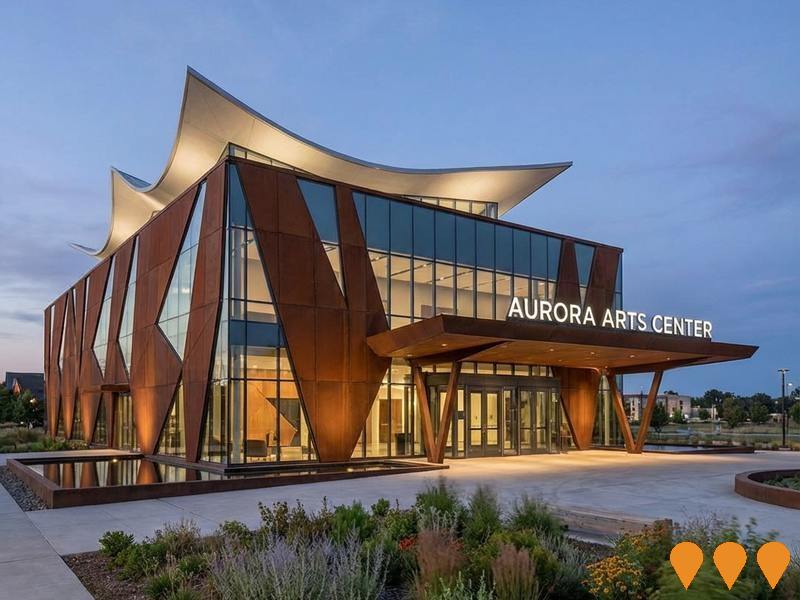Chart Color Schemes
est. as @ -- *
ABS ERP | -- people | --
2021 Census | -- people
Sales Activity
Curious about local property values? Filter the chart to assess the volume and appreciation (including resales) trends and regional comparisons, or scroll to the map below view this information at an individual property level.
Find a Recent Sale
Sales Detail
Population
Population growth drivers in Moira are strong compared to national averages based on AreaSearch's ranking of recent, and medium to long-term trends
Moira's population was 2,843 as of Aug 2021. By Aug 2025, it had increased to around 2,904, a rise of 61 people (2.1%). This growth is inferred from ABS data showing an estimated resident population of 2,864 in June 2024 and the addition of 23 validated new addresses since the Census date. The population density was 1.9 persons per square kilometer. Over the past decade, Moira's compound annual growth rate was 1.0%, outperforming its SA3 area. Natural growth contributed approximately 59.5% of overall population gains recently.
AreaSearch uses ABS/Geoscience Australia projections for each SA2 area, released in 2024 with a base year of 2022. For areas not covered by this data, AreaSearch employs VIC State Government's Regional/LGA projections from 2023, using weighted aggregation to adjust population growth from LGA to SA2 levels. Age group growth rates are applied across all areas for years 2032 to 2041. Future trends suggest a significant increase in the top quartile of regional areas, with Moira expected to grow by 1,104 persons to 2041, reflecting a total increase of 36.5% over 17 years.
Frequently Asked Questions - Population
Development
AreaSearch analysis of residential development drivers sees Moira recording a relatively average level of approval activity when compared to local markets analysed countrywide
Moira has recorded approximately 19 residential properties granted approval annually over the past five financial years, totalling 95 homes. In FY-26 so far, 7 approvals have been recorded. On average, between FY-21 and FY-25, 1.4 new residents were expected per year per dwelling constructed. Over the past two financial years, this figure has eased to 0.3 people per dwelling. Development projects averaged $816,000 in construction value during this period.
In FY-26, $2.7 million in commercial approvals have been recorded. Compared to the rest of Victoria, Moira shows around 75% of the construction activity per person and ranks among the 76th percentile nationally. Recent development has consisted entirely of standalone homes, maintaining the area's low density nature with an emphasis on detached housing.
The location has approximately 160 people per dwelling approval, indicating a low density market. Population forecasts indicate Moira will gain 1,061 residents by 2041. At current development rates, housing supply may struggle to match population growth.
Frequently Asked Questions - Development
Infrastructure
Moira has emerging levels of nearby infrastructure activity, ranking in the 25thth percentile nationally
Changes to local infrastructure significantly impact an area's performance. AreaSearch has identified 17 projects that could affect the area. Notable ones include Yarrawonga Solar Farm (Yarrawonga Vic 3730), Yarrawonga Mulwala Bridge Replacement, and Yarrawonga Village. The following list details those most relevant.
Professional plan users can use the search below to filter and access additional projects.
INFRASTRUCTURE SEARCH
 Denotes AI-based impression for illustrative purposes only, not to be taken as definitive under any circumstances. Please follow links and conduct other investigations from the project's source for actual imagery. Developers and project owners wishing us to use original imagery please Contact Us and we will do so.
Denotes AI-based impression for illustrative purposes only, not to be taken as definitive under any circumstances. Please follow links and conduct other investigations from the project's source for actual imagery. Developers and project owners wishing us to use original imagery please Contact Us and we will do so.
Frequently Asked Questions - Infrastructure
Yarrawonga Hospital New Theatre Suite
A $10.9 million state-of-the-art operating theatre suite at Yarrawonga Hospital, including a modern operating theatre, two pre-operative treatment spaces, six recovery bays, dedicated areas for sterilising equipment and storage, and a new entrance and reception area. The project enhances surgical services for procedures such as general surgery, orthopaedics, endoscopy, and urology.

Yarrawonga Solar Farm
Large-scale solar photovoltaic facility generating 50MW of renewable energy. Project includes battery storage system and grid connection infrastructure to provide clean energy for regional communities.
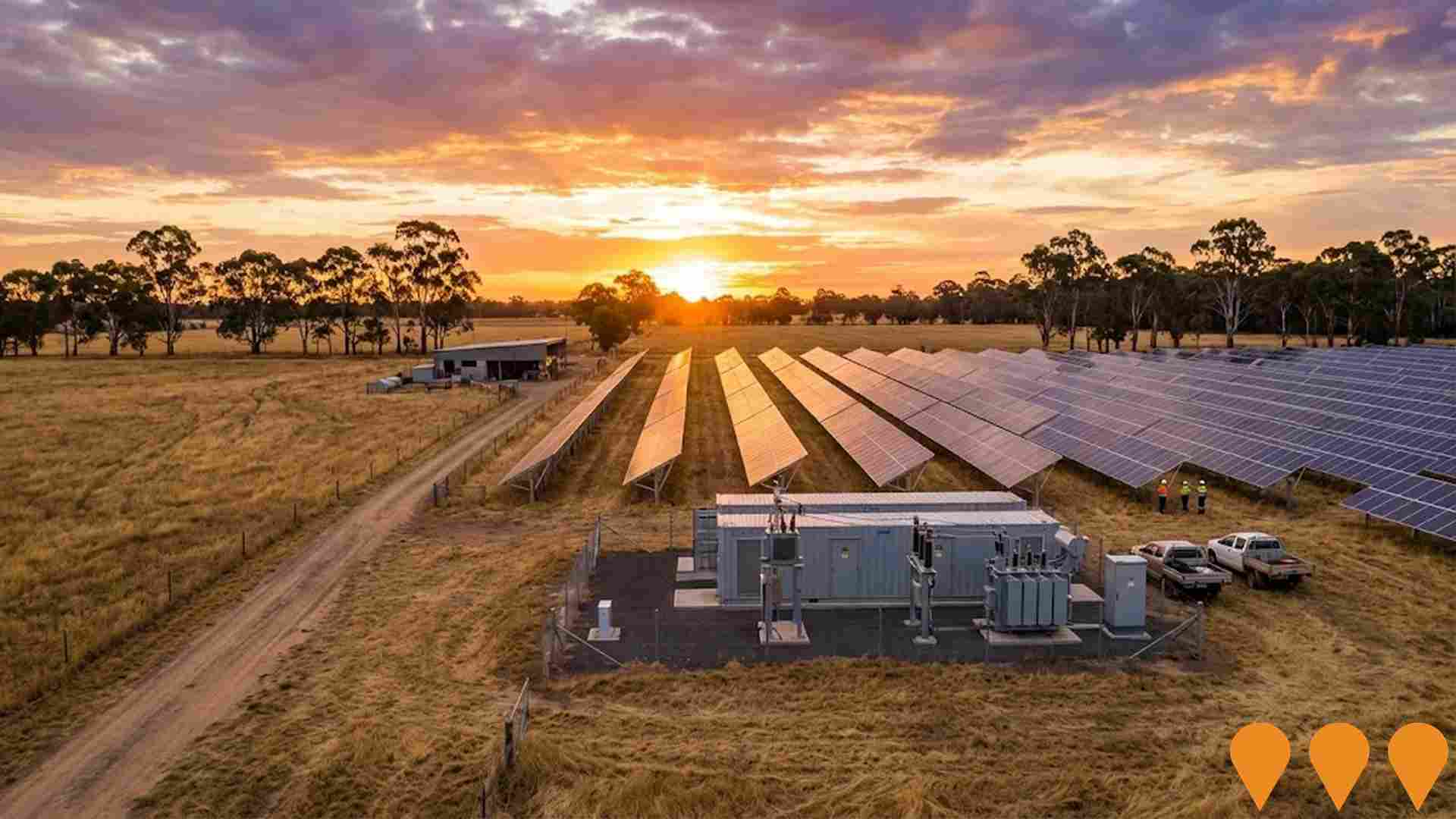
The Sebel Yarrawonga (Silverwoods Resort) - Stage 2 Expansion
Expansion of the luxury Sebel Yarrawonga hotel within the Silverwoods Golf and Lifestyle Resort. Stage 1 (63 rooms) opened in 2020. Stage 2 comprises the development of an additional 54 rooms to bring the total capacity to approximately 120 rooms. The resort features the 18-hole Black Bull Championship Golf Course, conference facilities, a health spa, and dining venues overlooking Lake Mulwala.
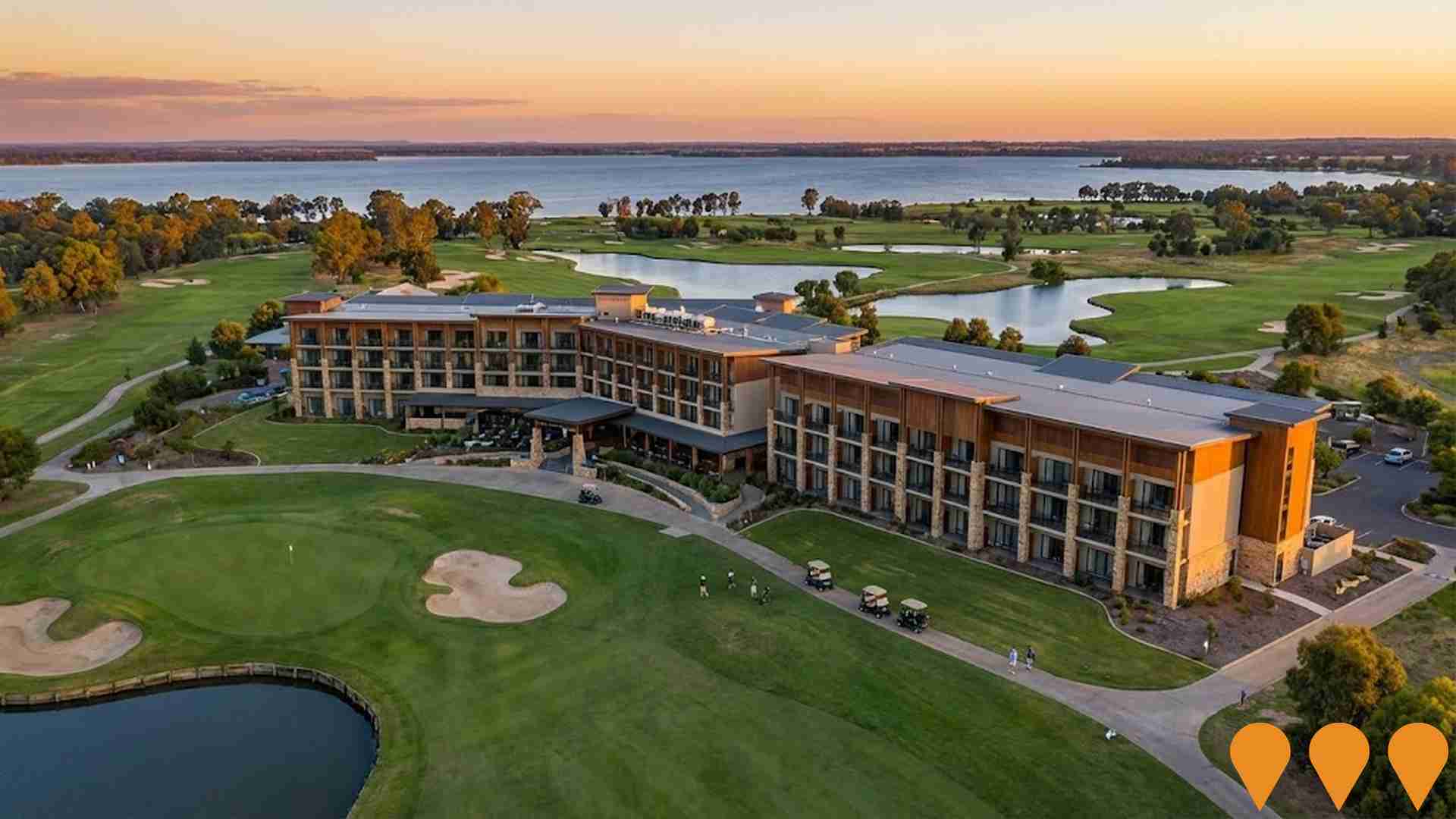
Yarrawonga Village
A brand new retail development anchored by a 3,692sqm Coles Supermarket and 200sqm Liquorland, set to open in July 2026, providing modern shopping conveniences to the Yarrawonga community.
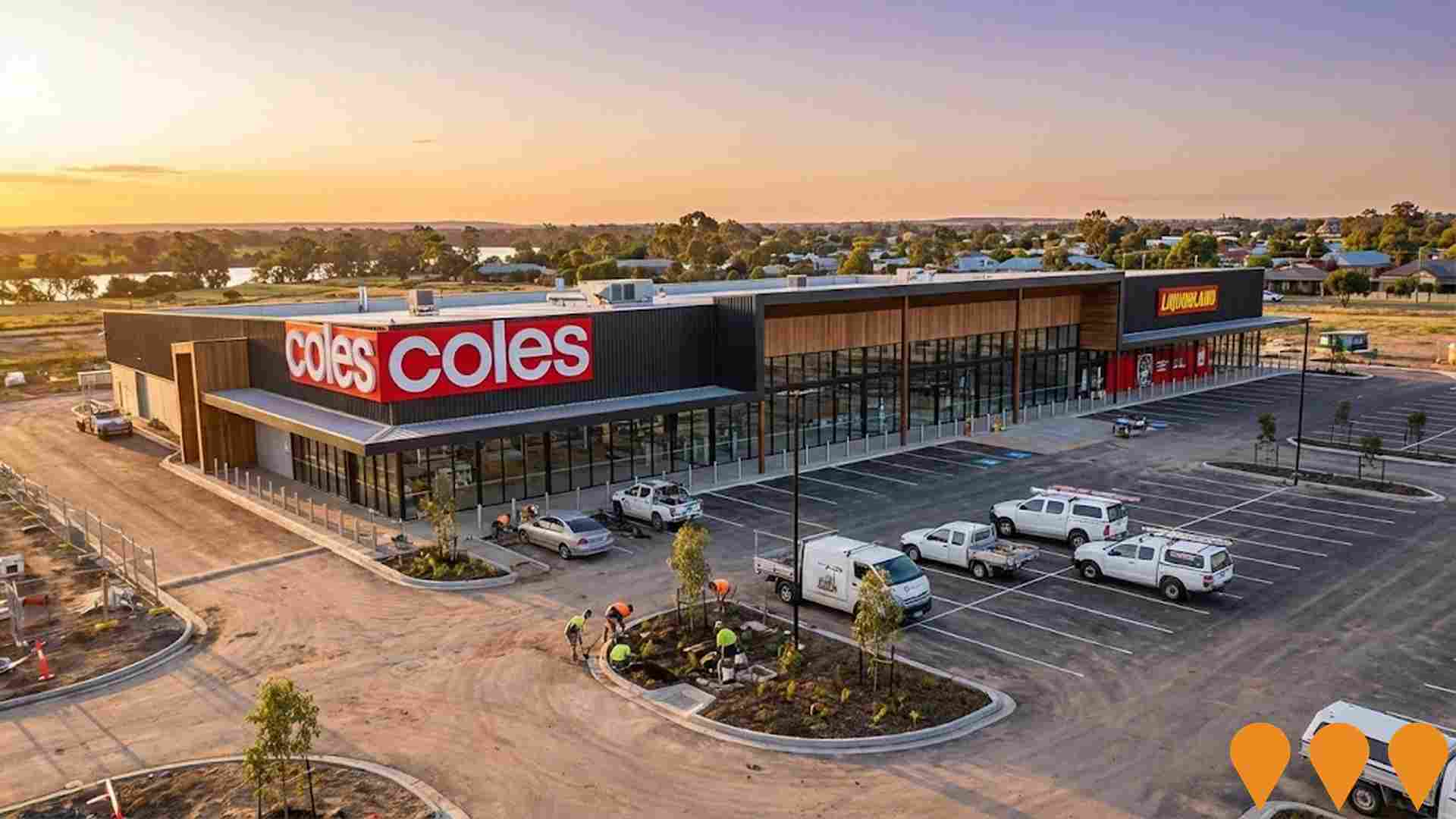
Yarrawonga Multisport Stadium
The Yarrawonga Multisport Stadium is an inclusive, modern facility designed for all ages, abilities, and ambitions, featuring a two-court indoor stadium, multipurpose rooms, a cafe, meeting spaces, and accessible amenities. It aims to be a hub for sport, health, and community connection, offering year-round activities such as training, competitions, fitness classes, youth programs, and community events.

Yarrawonga Mulwala Bridge Replacement
Planning for a new bridge to replace the existing 1924 Mulwala Bridge over Lake Mulwala, providing a vital transport link between Mulwala in NSW and Yarrawonga in Victoria. The Green route has been confirmed as the preferred option. The project remains unfunded, with timelines for design and construction yet to be determined.

Glanmire Park Estate
A 196ha residential development in Yarrawonga providing over 2,000 homes with open spaces, natural waterways, and community amenities near Lake Mulwala.

Yarrawonga Vic 3730
Greenfield projects in Yarrawonga (105 lots), Warragul ($55 million, 150 lots), and Colac (350 lots) aim to create community-focused living spaces with lifestyle amenities catering to retirees and residents.

Employment
AreaSearch analysis places Moira well above average for employment performance across multiple indicators
Moira has a balanced workforce with white and blue collar jobs, prominent manufacturing and industrial sectors, and an unemployment rate of 1.6%. As of June 2025, 1,431 residents are employed, with an unemployment rate of 2.2% lower than Rest of Vic.'s 3.8%, and workforce participation similar at 57.4%.
Key employment sectors include agriculture, forestry & fishing, health care & social assistance, construction. Moira specializes in agriculture, forestry & fishing, employing 3.4 times the regional average. Health care & social assistance employs 12.9% of local workers, below Rest of Vic.'s 16.8%. The area may have limited local employment opportunities, indicated by Census working population vs resident population count.
Between June 2024 and June 2025, labour force levels decreased by 14.4%, employment by 14.8%, raising unemployment rate by 0.5 percentage points. Rest of Vic. had an employment decline of 0.9% and labour force decline of 0.4%, with a 0.4 percentage point rise in unemployment rate. Jobs and Skills Australia's national employment forecasts from May 2025 suggest Moira's employment could grow by approximately 5.1% over five years and 11.5% over ten years, based on industry-specific projections applied to local employment mix.
Frequently Asked Questions - Employment
Income
Income figures position the area below 75% of locations analysed nationally by AreaSearch
Moira's median taxpayer income was $43,523 and average income was $53,285 in financial year 2022. This is lower than the national average, unlike Rest of Vic.'s median income of $48,741 and average income of $60,693 during the same period. Based on a 12.16% increase from Wage Price Index growth since financial year 2022, estimated incomes for September 2025 would be approximately $48,815 (median) and $59,764 (average). According to 2021 Census figures, Moira's household, family, and personal incomes all fall between the 22nd and 25th percentiles nationally. Income distribution shows that 30.9% of residents earn between $1,500 and $2,999 weekly (897 residents), similar to surrounding regions where 30.3% occupy this range. Housing costs are manageable with 90.2% retained, but disposable income is below average at the 34th percentile.
Frequently Asked Questions - Income
Housing
Moira is characterized by a predominantly suburban housing profile, with above-average rates of outright home ownership
Moira's dwelling structures, as per the latest Census, consisted of 98.5% houses and 1.6% other dwellings. In comparison, Non-Metro Vic. had 90.8% houses and 9.3% other dwellings. Home ownership in Moira was at 49.2%, with mortgaged dwellings at 38.6% and rented ones at 12.2%. The median monthly mortgage repayment was $1,213, below Non-Metro Vic.'s average of $1,300. Median weekly rent in Moira was $210, lower than Non-Metro Vic.'s $250 and the national average of $375. Nationally, Moira's mortgage repayments were significantly lower at $1,213 compared to Australia's average of $1,863.
Frequently Asked Questions - Housing
Household Composition
Moira has a typical household mix, with a higher-than-average median household size
Family households constitute 74.0% of all households, consisting of 28.0% couples with children, 35.5% couples without children, and 10.0% single parent families. Non-family households comprise the remaining 26.0%, with lone person households at 23.2% and group households making up 2.3%. The median household size is 2.5 people, larger than the Rest of Vic. average of 2.3.
Frequently Asked Questions - Households
Local Schools & Education
Educational outcomes in Moira fall within the lower quartile nationally, indicating opportunities for improvement in qualification attainment
The area faces educational challenges with university qualification rates at 15.4%, significantly below the Victorian average of 33.4%. This presents both a challenge and an opportunity for targeted educational initiatives. Bachelor degrees are the most common, with 11.6% of residents holding one, followed by graduate diplomas (2.0%) and postgraduate qualifications (1.8%). Trade and technical skills are prominent, with 42.1% of residents aged 15+ having vocational credentials - advanced diplomas at 9.6% and certificates at 32.5%.
Educational participation is high, with 29.5% of residents currently enrolled in formal education. This includes 12.0% in primary, 8.1% in secondary, and 2.2% in tertiary education. The area has two primary schools - Tungamah Primary School and Katamatite Primary School, serving a total of 63 students. These schools focus exclusively on primary education, with secondary options available in surrounding areas due to limited local school capacity (2.2 places per 100 residents compared to the regional average of 15.9).
Frequently Asked Questions - Education
Schools Detail
Nearby Services & Amenities
Transport
Transport servicing is very low compared to other areas nationally based on assessment of service frequency, route connectivity and accessibility
The transport analysis indicates seven active stops operating within Moira, offering a mix of bus services. These stops are served by seven distinct routes, together facilitating 56 weekly passenger trips. Transport accessibility is assessed as limited, with residents generally situated 3682 meters from the nearest stop.
Service frequency averages eight trips per day across all routes, translating to roughly eight weekly trips per individual stop.
Frequently Asked Questions - Transport
Transport Stops Detail
Health
Health performance in Moira is lower than average with common health conditions somewhat prevalent across both younger and older age cohorts
Moira faces significant health challenges with common health conditions prevalent across both younger and older age cohorts. Private health cover is very low at approximately 47% of the total population (~1,356 people), compared to the national average of 55.3%.
The most common medical conditions are arthritis (10.4%) and mental health issues (8.8%). 64.6% of residents declare themselves completely clear of medical ailments, compared to 60.0% across Rest of Vic.. As of 2021, the area has 21.8% of residents aged 65 and over (634 people), which is lower than the 27.0% in Rest of Vic.. Health outcomes among seniors are particularly strong, performing better than the general population in health metrics.
Frequently Asked Questions - Health
Cultural Diversity
The latest Census data sees Moira placing among the least culturally diverse areas in the country when compared across a range of language and cultural background related metrics
Moira's population showed low cultural diversity: 87.7% were citizens, 91.2% were born in Australia, and 96.8% spoke English only at home. Christianity was the predominant religion, with 56.6%, similar to the regional figure of 56.1%. The top three ancestral groups were Australian (35%), English (31.5%), and Irish (11.1%).
Notably, Scottish ancestry was higher in Moira at 8% compared to 8.3% regionally; Maori at 0.4% versus 0.2%; and Australian Aboriginal at 1.9% against the regional figure of 1.5%.
Frequently Asked Questions - Diversity
Age
Moira hosts an older demographic, ranking in the top quartile nationwide
Moira's median age is 47 years, which is significantly higher than the Rest of Vic. average of 43 and substantially exceeds the national average of 38 years. The age profile shows that individuals aged 55-64 are particularly prominent, making up 16.9% of the population, while those aged 85 and above comprise a smaller proportion at 1.4%. This concentration of individuals aged 55-64 is well above the national average of 11.2%. Between 2021 and present, the age group of 35 to 44 has grown from 10.1% to 11.4%, while the 25 to 34 cohort increased from 9.4% to 10.5%. Conversely, the 45 to 54 cohort has declined from 14.2% to 12.3%, and the 5 to 14 age group dropped from 12.6% to 11.0%. By 2041, Moira is expected to experience notable shifts in its age composition. The 35 to 44 age group is projected to grow by 78%, adding 258 people and reaching a total of 590 from the current figure of 331. Meanwhile, the 75 to 84 age group is expected to display more modest growth, adding only 4 residents.
